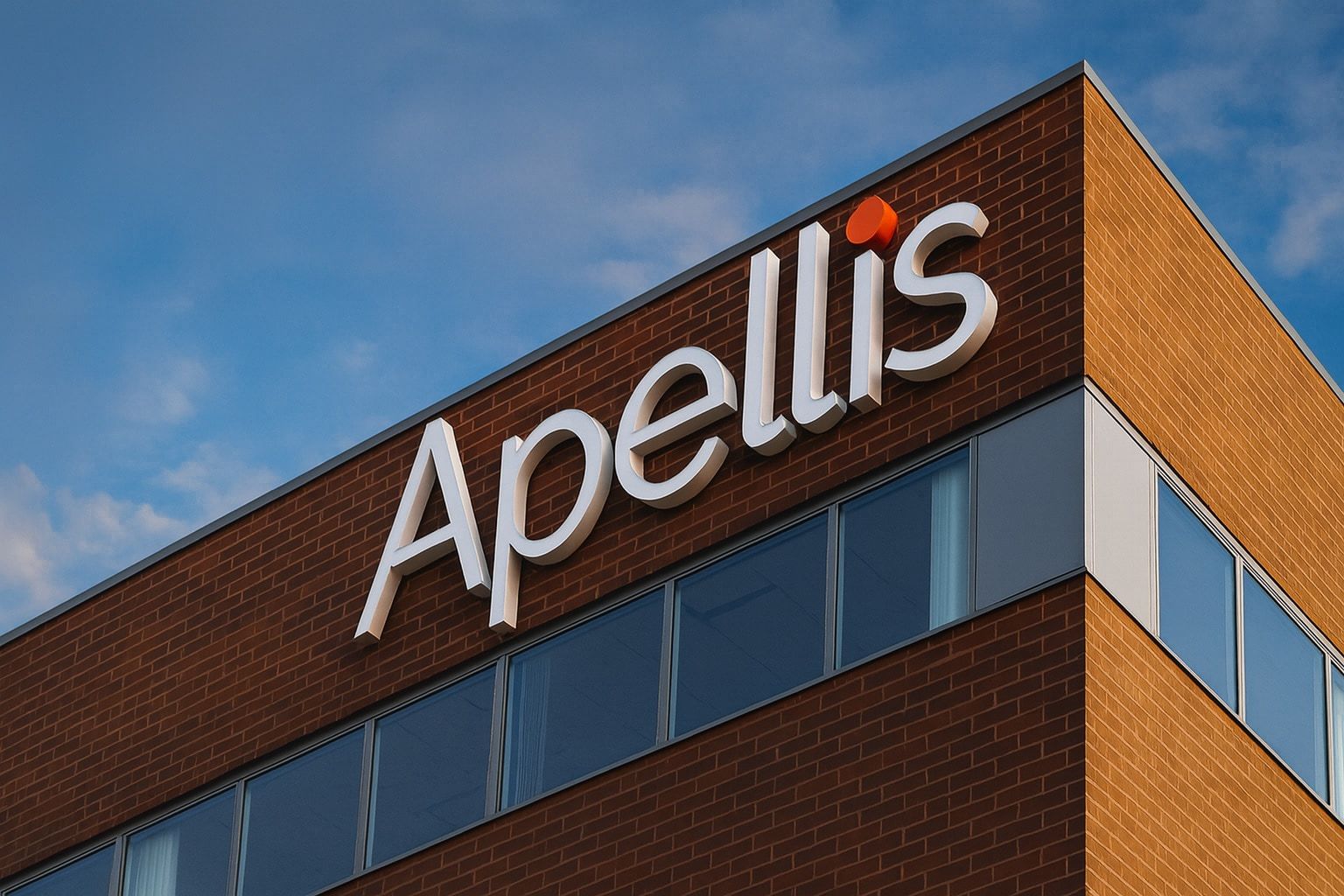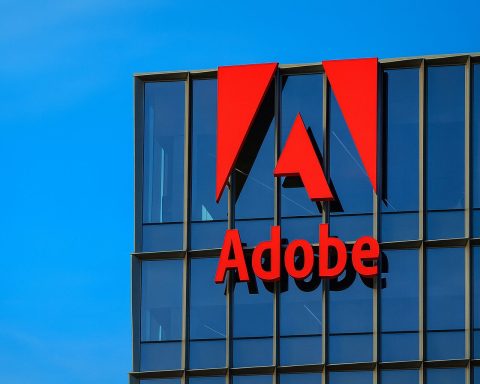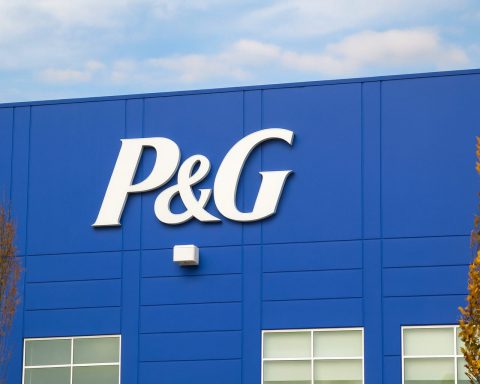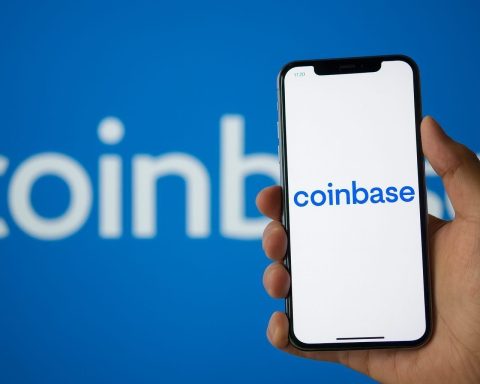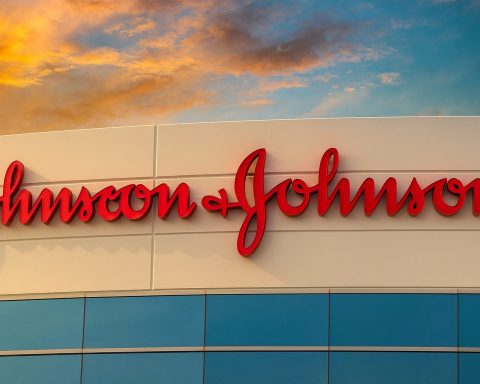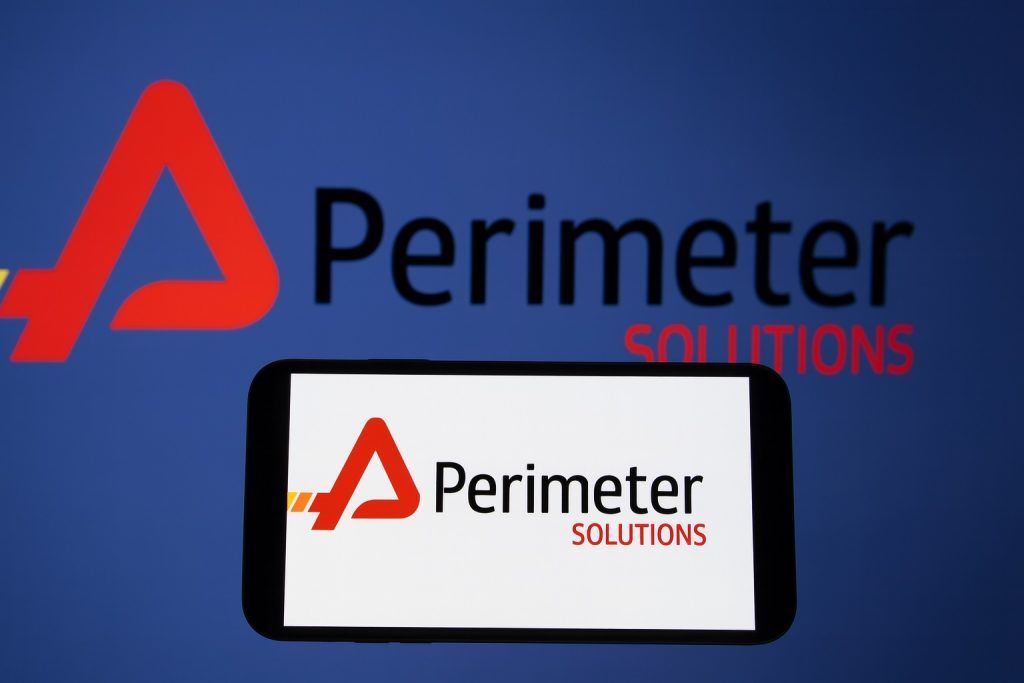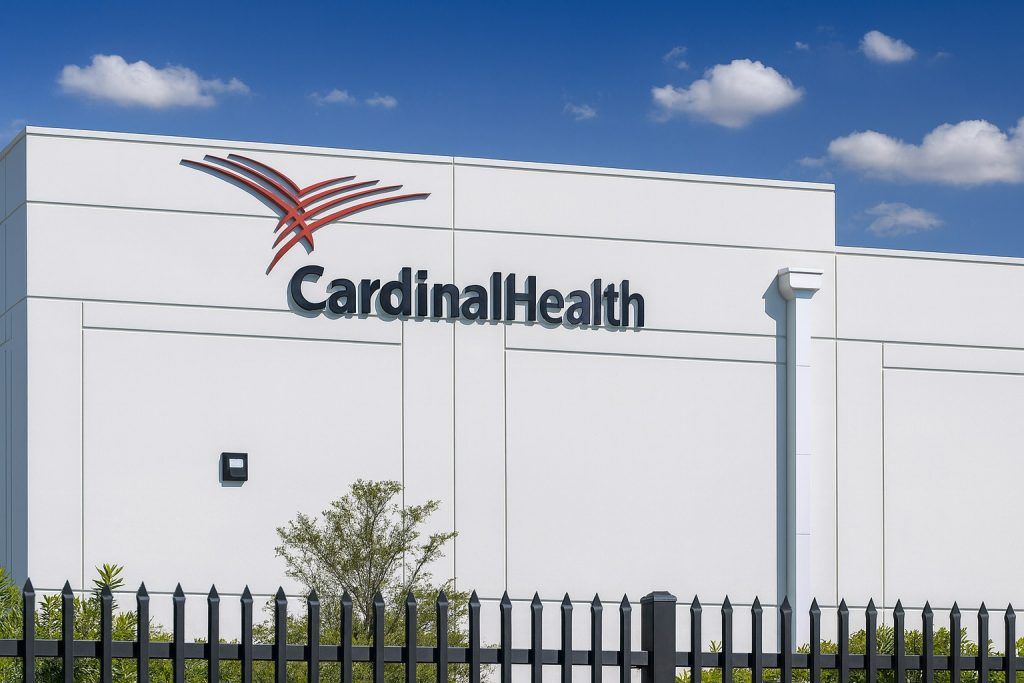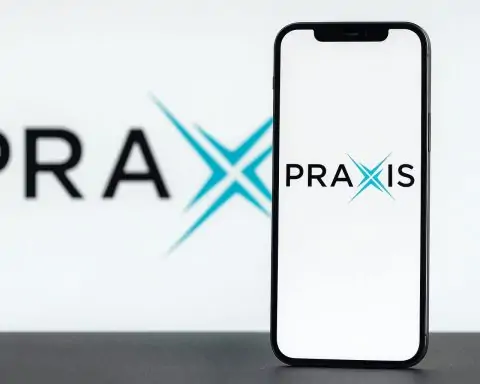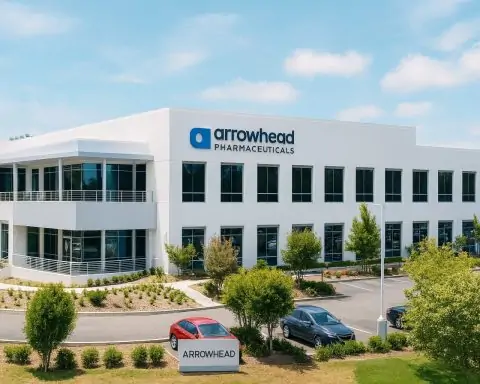- Blockbuster Q3, stock tumbles: Apellis Pharmaceuticals (APLS) posted record Q3 2025 revenue of $458.6 million (up from $196.8 M a year ago) and swung to a $215.7 M net profit [1] [2], yet its stock plunged ~21% to the mid-$20s as management’s outlook signaled a return to losses ahead [3].
- Syfovre growth slows: Flagship Syfovre (for geographic atrophy, GA) had $150.9 M in Q3 U.S. sales (essentially flat year-on-year) [4]. Injection volumes grew ~4% quarter-over-quarter and Syfovre holds ~60% GA market share [5], but only ~10–15% of eligible GA patients are on treatment [6] and doctors debate the therapy’s real-world vision benefits [7].
- New FDA approval: In July, Apellis’s Empaveli (pegcetacoplan) won FDA approval as the first treatment for two rare kidney diseases (C3G and IC-MPGN) [8]. 152 patient start forms were received by Q3’s end [9], marking an encouraging launch in these ultra-orphan conditions.
- Analysts divided:Goldman Sachs cut APLS to “Sell” (PT $18) in September over Syfovre uptake and rival drug risks [10] [11], while Wells Fargo upgraded to “Overweight” (PT $32) in mid-October on a brighter outlook [12]. Overall Wall Street sentiment is bullish (13 Buy, 6 Hold, 1 Sell) but price targets range widely from $18 to $60 [13], reflecting uncertainty.
- Cash & deals bolster outlook: Apellis held $479 M in cash as of Q3 [14] and expects current funds plus revenue to carry it to sustainable profitability [15]. A $275 M upfront payment from partner Sobi (for ex-U.S. royalties) fueled Q3’s revenue surge [16], and Apellis is eligible for another $25 M if EU regulators approve Empaveli’s new use [17].
- Investor buzz & M&A rumors: The stock, which traded between $16.10 – $35.72 in the past year [18], has seen volatility. In August, reports surfaced that AstraZeneca explored acquiring Apellis to gain its GA drug (neither company confirmed talks) [19], underscoring Apellis’s attractiveness as a biotech takeover target.
Blockbuster Quarter Meets Stock Turbulence
Apellis Pharmaceuticals, a biotech focused on complement-mediated diseases [20], delivered standout financial results for the third quarter of 2025 – yet its stock took a beating. The company reported Q3 revenue of $458.6 million, more than doubling from $196.8 M in the same quarter last year [21]. This record top-line was boosted by a one-time $275 M licensing deal with partner Sobi [22], which paid Apellis upfront for future ex-U.S. royalties on Aspaveli (Empaveli’s overseas brand). Thanks largely to this deal, Apellis swung to a net profit of $215.7 M (versus a $57.4 M loss a year ago) [23].
However, the market’s reaction was harsh. Shares of APLS plunged over 20% after earnings – falling to around $24 – as investors focused on management’s guidance that the current profitability is not yet permanent [24]. Despite beating analyst forecasts (EPS $1.67 vs. $1.03 est.) [25], Apellis indicated it expects to return to net losses in coming quarters, once the one-off Sobi windfall is absorbed. This cautious outlook spooked traders, sending the stock on a steep slide in Thursday’s session. The sharp drop erased a rally that had lifted Apellis shares to about $29–30 in late October [26]. Prior to earnings, the stock had climbed on optimism from an analyst upgrade and data updates, but the post-earnings “whiplash” highlights Wall Street’s jitters about Apellis’s trajectory going forward.
Syfovre injection volumes have risen steadily each quarter (gray portions indicate free doses provided) [27] [28]. Q3 2025 saw ~101,000 total doses shipped, including ~15,000 free samples, as Apellis works to expand the geographic atrophy treatment market.
Syfovre Leads in GA – But Can Growth Accelerate?
Apellis’s flagship drug Syfovre (pegcetacoplan injection) was the first therapy approved for geographic atrophy (GA) – an advanced form of macular degeneration that causes progressive vision loss. Syfovre remains the market leader in GA, capturing an estimated 60%+ market share in the U.S. [29]. In Q3, Syfovre generated $150.9 M in U.S. sales [30], accounting for the bulk of Apellis’s product revenue. However, year-over-year sales were roughly flat (Q3 2024 also saw ~$152 M) [31] – a sign that growth has plateaued after the initial launch phase. On a quarterly basis, use is still rising: Apellis reported about 101,000 doses delivered in Q3 (including ~15k free doses), representing a 4% increase in injection volume from Q2 [32]. The company says Syfovre’s clinical profile – with effects that deepen over time and flexible dosing – and its broad insurance coverage have helped maintain uptake [33]. Indeed, roughly 52% of new GA patients who started treatment in Q3 went on Syfovre [34], indicating it’s capturing over half of new prescriptions.
Yet headwinds are emerging for Syfovre. By Apellis’s estimates (and those of partner Astellas), only ~10–15% of diagnosed GA patients have begun treatment with any GA drug so far [35] – meaning the vast majority of patients remain untreated. This represents a huge growth opportunity, but also raises questions about uptake barriers. Goldman Sachs analysts recently warned that some retina specialists are not fully convinced that slowing GA lesion growth yields tangible quality-of-life improvements for patients [36]. In other words, if doctors and patients don’t see meaningful preservation of vision, they may be reluctant to undergo costly, frequent eye injections. Additionally, Astellas’s Izervay (a rival GA therapy approved shortly after Syfovre) is vying for market share. Goldman cited key opinion leader feedback suggesting a “superior risk-benefit perception” for Izervay among some physicians [37]. Notably, Apellis faced safety concerns last year when a rare side effect (ocular inflammation and blood clots) was linked to Syfovre, though the company implemented mitigation measures. Still, perception of risk could tilt some doctors toward the competitor. Another challenge has been patient drop-off due to funding hurdles: Apellis offers co-pay assistance, but Goldman noted that charitable support programs for GA patients have recently been scaled back, leading to higher attrition rates among patients who cannot afford continuous treatment [38].
Apellis is working to expand Syfovre’s reach and reinforce its value proposition. The company is investing in educating physicians and patients on the benefits of treating GA earlier to preserve vision. It also continues to provide free starter doses (as reflected by ~$15 M worth of free vials in Q3) to encourage adoption [39]. Looking ahead, Apellis is already developing a next-generation GA therapy: a combination of Syfovre with an investigational siRNA drug (APL-3007) that more fully suppresses the destructive complement pathway in the retina [40]. A Phase 2 trial of this combo is ongoing, and could potentially boost efficacy beyond Syfovre alone if successful. This shows Apellis’s commitment to defending its lead in GA – a market that could grow substantially if more patients opt for treatment. For now, Syfovre provides a steady revenue base, but Wall Street clearly wants to see re-acceleration of its growth in coming quarters to justify Apellis’s valuation.
Empaveli’s New Indication and Pipeline Progress
While GA is Apellis’s highest-profile market, the company is also making waves in rare disease therapeutics. Its systemic C3 inhibitor Empaveli (pegcetacoplan) was originally approved for paroxysmal nocturnal hemoglobinuria (PNH), a rare blood disorder. In July 2025, Empaveli gained an important label expansion: the FDA approved Empaveli as the first-ever treatment for two rare kidney diseases, C3 glomerulopathy (C3G) and primary IC-MPGN, in patients age 12 and up [41]. These ultra-rare conditions (fewer than ~5,000 U.S. patients) involve a similar complement system dysfunction that Empaveli targets. Approval was backed by impressive Phase 3 trial results – a 68% reduction in proteinuria (protein in urine) and stabilization of kidney function in treated patients [42] [43]. Apellis launched Empaveli in nephrology over the summer, and by the end of Q3 had 152 patient start forms for C3G/IC-MPGN on file [44]. This includes ~50 patients rolled over from a pre-approval access program, indicating a core base of early adopters. Apellis’s CEO Cedric Francois heralded the approval as a major milestone that “adds to Empaveli’s robust profile” and could make it “the treatment of choice” in these diseases [45].
Commercial uptake in rare diseases tends to build gradually, but Empaveli’s initial traction in kidney clinics is encouraging. In Q3, Empaveli’s U.S. sales came in at $26.8 M, a modest increase from $24.6 M in the prior-year quarter [46]. Beyond PNH and these new kidney indications, Apellis sees further expansion opportunities. The company plans to initiate two pivotal trials by late 2025: one in focal segmental glomerulosclerosis (FSGS) and another in delayed graft function (DGF), both kidney disorders with high unmet need linked to complement activation [47]. If Empaveli can succeed in additional renal diseases, it would broaden the drug’s reach and reinforce Apellis’s franchise in complement inhibition. Notably, Apellis’s partner Sobi (Swedish Orphan Biovitrum) is handling Empaveli (branded “Aspaveli”) outside the U.S. Sobi expects a European approval decision by late 2025 for C3G/IC-MPGN [48] – which would trigger up to $25 M in milestone payouts to Apellis [49] and, more importantly, open another market for growth.
Overall, Apellis now has two approved products (Syfovre and Empaveli) covering four indications across ophthalmology and nephrology – all leveraging its core strategy of inhibiting C3, a central protein in the immune complement cascade [50]. This pipeline-in-a-product approach means successes in new indications can amplify revenue without entirely new drugs. However, it also means the company’s fortunes ride on the continued clinical benefits of pegcetacoplan across different diseases. So far, data has been strong, and Apellis is bolstering that with long-term studies (for instance, 52-week results from the VALIANT trial in C3G/IC-MPGN were presented at a kidney conference, reinforcing Empaveli’s sustained efficacy [51]). As Apellis broadens its label and pursues new trials, it is gradually transforming into a multi-indication biotech with a growing addressable market – from a niche PNH base to larger populations like GA and beyond.
Financial Foundation and Partnerships
Apellis’s Q3 showcased not just product performance but also shrewd financial maneuvers to fund its ambitions. The company ended the quarter with $479.2 M in cash and equivalents [52], up from $411 M at the start of 2025. This was bolstered by the royalty monetization deal with Sobi announced in July, where Apellis agreed to sell 90% of its future ex-U.S. royalties on Aspaveli for up to $300 M [53]. In Q3, Apellis received $275 M in cash upfront from Sobi under this deal [54], immediately strengthening its balance sheet. (The remaining $25 M is tied to the anticipated EU approval for the kidney indication [55].) In exchange, Sobi will keep 90% of overseas Empaveli royalties until certain sales caps are hit, after which full royalty rights revert to Apellis [56]. This creative financing essentially pulled forward years’ worth of overseas revenue to help Apellis fund operations now. Management noted that, with the current cash on hand plus ongoing product revenues, they expect to fund the company through to sustainable profitability without needing additional equity raises [57]. In fact, Apellis felt secure enough this quarter to stop factoring (selling) its receivables, a practice it used previously to generate cash [58].
The Sobi partnership continues to be a key part of Apellis’s strategy. Sobi has been Apellis’s commercialization ally for systemic pegcetacoplan since 2020, co-investing in development and marketing outside the US. This collaboration not only provides cash, but also leverages Sobi’s global reach in rare diseases. Apellis also has R&D partnerships – for example with Beam Therapeutics on gene editing – aiming to stay at the cutting edge of complement biology. For Apellis, whose R&D expenses fell to $68.2 M in Q3 (from $88.6 M a year prior) [59], such alliances and prudent spending are vital to balancing innovation with financial discipline. One area of cost increase has been commercial investment: SG&A expenses rose to $142.7 M (vs $122 M in Q3 2024) as Apellis supports the launches of Syfovre and Empaveli [60]. Still, with a newly profitable quarter and a significant cash cushion, Apellis appears to have gained more runway to execute its plans. “Combined with our strong financial position, these achievements enable us to enter Q4 and 2026 with a solid foundation and momentum for continued growth,” CEO Francois said [61]. The challenge now is to deliver that growth in the coming year, when one-off licensing boosts won’t recur.
Wall Street’s Take: Bulls vs. Bears
Analysts are intensely debating Apellis’s prospects, leading to a wide spread in opinions. On one hand, many analysts remain optimistic about Apellis’s long-term growth. According to Refinitiv data, 18 analysts covering APLS stock have an average 12-month price target around $37–38, which is roughly 60% above the current trading level [62]. The majority rate the stock a “Buy/Outperform”, reflecting confidence in Apellis’s two-product platform and its potential to expand into new markets. For instance, Wells Fargo’s Derek Archila upgraded Apellis to Overweight on October 15 and raised the target price from $29 to $32 [63]. This call came right after the stock dipped below $23, and signaled Wells Fargo’s view that the market was undervaluing Apellis’s prospects. JP Morgan and Cantor Fitzgerald have also maintained bullish stances (with targets in the high-$30s to $40 range) [64], citing Apellis’s innovative approach in complement inhibition and the revenue runway from Syfovre’s first-mover advantage in GA.
On the other hand, skeptics point to near-term hurdles. Goldman Sachs notably downgraded Apellis to “Sell” in late September, voicing concerns that Syfovre’s growth trajectory may disappoint [65]. Goldman’s analysts argued that the GA therapy class is expanding slower than hoped – with payer, patient, and physician hurdles as discussed – and they set a street-low $18 target for the stock [66]. They did acknowledge upside in Empaveli’s new nephrology launch (calling Apellis’s data “superior” to a competitor’s in that space) [67], but essentially felt the stock’s prior rebound already baked in that good news [68]. Importantly, Goldman’s model now pegs Syfovre’s peak sales at $1.1 B in 2030, which is below the ~$1.3 B consensus forecast [69] – reflecting their tempered expectations for how widely GA treatment will be adopted. They also noted Apellis lacks major new catalysts in the immediate future; the next significant boost to GA franchise might come in late 2026 if enhancements like a pre-filled syringe version of Syfovre or AI-guided injection tech drive greater uptake [70]. In the meantime, the bear case is that Apellis could trade range-bound or lower if Syfovre scripts stagnate and the company resumes posting losses each quarter.
The divergence in price targets – from as low as ~$18 to as high as $60 – underscores how differently analysts view Apellis’s risk-reward profile [71]. According to a recent stock analysis, 13 analysts rate Apellis a Buy, 6 a Hold, and only 1 a Sell, but that lone bear is vocal [72]. The bulls highlight Apellis’s innovative science and multiple shots on goal, noting that few biotechs of Apellis’s size have two approved products and a pipeline of additional indications. They see the current stock dip as an opportunity, given Apellis’s ~$3.7 B market cap is modest next to the potential multi-billion-dollar markets it is targeting [73] [74]. The bears and skeptics, however, emphasize execution risks: the company must convince more doctors and patients to embrace GA therapy, navigate competition, and eventually face the entry of larger players or new modalities in complement inhibition. They also point out that Apellis, like many biotechs, still trades at a high multiple of current sales (since it’s in ramp-up mode), and any stumble in growth could weigh heavily on the stock.
For investors, it’s a classic high-risk, high-reward scenario. The consensus leans positive on Apellis’s fundamentals, but the recent stock volatility reflects a fragile sentiment. Even after the October drop, Apellis shares are roughly flat over the past 12 months and down about 25–30% year-to-date (they began 2025 near $35, plunged to the mid-teens after a safety scare in 2023, then recovered on the GA drug rollout). Traders are likely to watch upcoming quarterly trends in Syfovre demand like hawks, as well as any new clinical readouts or regulatory decisions that could swing the narrative.
Investor Sentiment and M&A Chatter
The retail investor community and biotech-focused funds alike have been actively discussing Apellis’s prospects. A key part of investor sentiment is the possibility that Apellis could be more valuable in the hands of a larger pharmaceutical company. This speculation gained traction over the summer when M&A rumors surfaced: in early August, reports indicated that pharma giant AstraZeneca was exploring a potential acquisition of Apellis [75]. AstraZeneca was said to be interested in Apellis’s GA therapy to bolster its ophthalmology portfolio, following moves by other big pharma to acquire eye drug developers (for example, Astellas’s $5.9 B takeover of Iveric Bio for its GA drug in 2023). Neither Apellis nor AstraZeneca confirmed the talks, and no formal bid materialized, but the news fueled speculation and helped lift Apellis’s stock at the time. It highlighted that Apellis – with its unique complement pipeline – is on the radar as a takeover candidate.
Even beyond that specific rumor, analysts note that Apellis’s profile (commercial-stage, first-in-class therapy, de-risked mechanism) makes it an attractive target in a biotech sector where larger companies are hungry for innovative assets. Any whiff of renewed buyer interest could provide upside to Apellis shares. Conversely, absent an acquisition, Apellis will need to prove it can go it alone and eventually reach profitability by growing its product revenue. The company insists it can. Executives have repeatedly stated that no additional capital raises are needed and that Apellis’s cash plus revenue should carry it to profitability within the next couple of years [76]. If that plays out, current shareholders could be rewarded whether or not a buyout ever occurs. But in the short term, Apellis remains a show-me story – investors are looking for concrete signs of reaccelerating GA adoption, successful new market launches, and prudent cost management.
Risks on the horizon include potential competition in GA (Roche and others are researching alternative approaches to treat dry AMD), as well as the inherent risks of drug development (Apellis’s upcoming trials in FSGS/DGF will need to succeed to unlock new revenue streams). On the flip side, growth opportunities abound: increasing GA penetration from 10% to even 30% of patients could triple the GA market, and international expansion (pending EU approvals) could add significant sales for both Syfovre and Empaveli. Apellis’s management emphasizes that GA is still in the early innings – millions suffer from GA globally, and treatment rates may climb as real-world evidence of vision preservation mounts over time. Additionally, the complement biology platform could yield new drugs or combos down the road, extending Apellis’s reach in immunology.
Outlook: Cautious Optimism Amid Volatility
As of the end of October 2025, Apellis Pharmaceuticals finds itself at a crossroads. The company has proven its ability to innovate and execute, bringing multiple first-in-class therapies to market and achieving quarterly revenue almost half a billion dollars – a rarity among biotechs of its size [77]. It has navigated serious challenges (like last year’s safety scare) and adapted with strategic deals to fortify its finances. For patients, Apellis’s therapies are delivering much-needed options: people with GA finally have a chance to slow their vision loss, and those with C3G or IC-MPGN have, for the first time, an approved treatment to stave off kidney failure. These scientific and medical wins form the bull case that Apellis is building real value.
However, the market’s confidence is not yet unwavering. The recent sell-off shows that investors want to see clear paths to growth and profitability beyond one-off boosts. In coming quarters, all eyes will be on Syfovre’s sales trend – can Apellis accelerate uptake and perhaps expand usage (e.g. by lengthening treatment duration per patient)? Also important will be updates on Empaveli’s launch in kidney disease and progress in clinical trials, which could signal new revenue streams on the horizon. Any positive surprises (such as faster GA market penetration, a partnership, or M&A interest resurfacing) could quickly put Apellis back on Wall Street’s radar as an outperformer. Conversely, if growth disappoints or the company ends up needing more cash, the stock could languish.
For now, Apellis remains a stock to watch in the biotech sector, with a blend of factors that make it suitable for Google News headlines: breakthrough therapies, volatile stock moves, and a chorus of differing expert opinions. With an average analyst price target implying substantial upside [78], there is evidently faith in Apellis’s long-term story. But as the past week showed, sentiment can swing swiftly. Investors should stay tuned as Apellis writes its next chapter – be it climbing back on growth, or carving a new path via strategic deals – in its mission to conquer complement-driven diseases.
Sources: Apellis Q3 2025 Press Release [79] [80] [81]; Analyst and Media reports (Goldman Sachs via Investing.com [82] [83]; Wells Fargo via GuruFocus [84]; DirectorsTalk [85]; ts2.tech [86] [87]; InsiderMonkey [88]).
References
1. www.investing.com, 2. markets.businessinsider.com, 3. www.investing.com, 4. www.investing.com, 5. www.investing.com, 6. www.investing.com, 7. www.investing.com, 8. markets.businessinsider.com, 9. markets.businessinsider.com, 10. www.investing.com, 11. www.investing.com, 12. www.gurufocus.com, 13. www.directorstalkinterviews.com, 14. www.stocktitan.net, 15. www.stocktitan.net, 16. www.investing.com, 17. markets.businessinsider.com, 18. ts2.tech, 19. ts2.tech, 20. www.gurufocus.com, 21. www.investing.com, 22. www.investing.com, 23. markets.businessinsider.com, 24. www.investing.com, 25. www.investing.com, 26. www.directorstalkinterviews.com, 27. markets.businessinsider.com, 28. markets.businessinsider.com, 29. www.investing.com, 30. www.investing.com, 31. www.investing.com, 32. www.stocktitan.net, 33. www.investing.com, 34. www.investing.com, 35. www.investing.com, 36. www.investing.com, 37. www.investing.com, 38. www.investing.com, 39. markets.businessinsider.com, 40. markets.businessinsider.com, 41. markets.businessinsider.com, 42. www.insidermonkey.com, 43. www.insidermonkey.com, 44. markets.businessinsider.com, 45. markets.businessinsider.com, 46. www.investing.com, 47. markets.businessinsider.com, 48. markets.businessinsider.com, 49. markets.businessinsider.com, 50. www.gurufocus.com, 51. markets.businessinsider.com, 52. www.stocktitan.net, 53. markets.businessinsider.com, 54. www.investing.com, 55. markets.businessinsider.com, 56. markets.businessinsider.com, 57. www.stocktitan.net, 58. markets.businessinsider.com, 59. markets.businessinsider.com, 60. markets.businessinsider.com, 61. markets.businessinsider.com, 62. www.gurufocus.com, 63. www.gurufocus.com, 64. www.gurufocus.com, 65. www.investing.com, 66. www.investing.com, 67. www.investing.com, 68. www.investing.com, 69. www.investing.com, 70. www.investing.com, 71. www.directorstalkinterviews.com, 72. www.directorstalkinterviews.com, 73. www.directorstalkinterviews.com, 74. www.directorstalkinterviews.com, 75. ts2.tech, 76. www.stocktitan.net, 77. www.investing.com, 78. www.gurufocus.com, 79. markets.businessinsider.com, 80. www.investing.com, 81. www.investing.com, 82. www.investing.com, 83. www.investing.com, 84. www.gurufocus.com, 85. www.directorstalkinterviews.com, 86. ts2.tech, 87. ts2.tech, 88. www.insidermonkey.com
